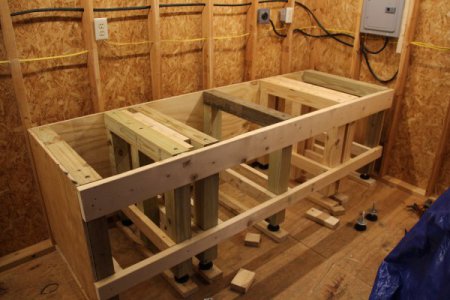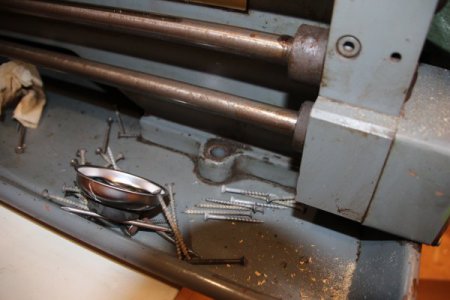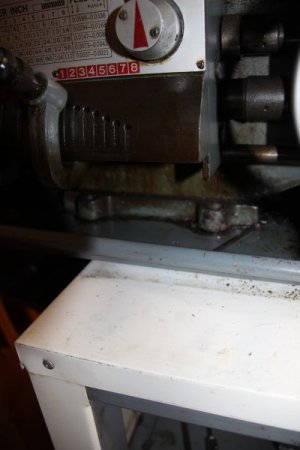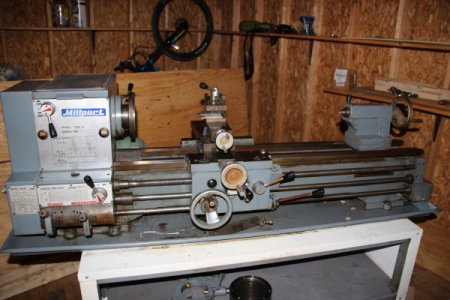- Joined
- Dec 30, 2017
- Messages
- 117
I'm building a bench for my lathe! What fun! Take a look at what I have and tell me if I missed anything before I make this all but permanent and put the top on it. Or, if you have a stroke of genius and have a great idea for an addition that I might not have forgotten but is a good idea... I'll gladly steal that idea too!
It is a bunch of 4x4s, glued and screwed at joints, with sheathing grade plywood on the back and sides to resist wracking (I hope). I'm not an engineer, and as far as I can tell, never will be, so let me know if it needs to be bigger.
My lathe is a 12x36 no-name from a country far away across the Pacific. China? Taiwan? I am guessing Taiwan, as this lathe is probably from the '80s. It's somewhat similar to a similarly sized Grizzly 9249, but... close only counts with horse shoes and hand grenades, right?
Question number one... How much does this thing weigh? My guess would be about 750 lbs? If you've got a guess feel free to guess for me.
What about leveling it? I've got leg levelers on my bench, but I've got eighteen legs. I know it will move, and eighteen legs are going to be a bit of a pain to make level enough for a machinist level. I've got six holes to mount the lathe. I'm thinking of trying to use one bolt in each hole to both hold it down and up. Bear with this illustration. Picture a bolt, coming up through my worktop. We'll start with the bolt head, under the tabletop. Bolt, washer, wood table material, washer, nut to hold the table tight, nut to hold up the lathe, washer, lathe, washer, nut. Will six 5/8 inch bolts hold up and hold down a lathe of this magnitude without problems?
I've got pictures attached (I hope) of my bench skeleton, the bolt holes at the tail and head of my lathe (four holes at the head, two at the tail), and a picture of my lathe that I took directly after getting it into my shop.
Thanks for the help for a wannabe hobby-machinist!




It is a bunch of 4x4s, glued and screwed at joints, with sheathing grade plywood on the back and sides to resist wracking (I hope). I'm not an engineer, and as far as I can tell, never will be, so let me know if it needs to be bigger.
My lathe is a 12x36 no-name from a country far away across the Pacific. China? Taiwan? I am guessing Taiwan, as this lathe is probably from the '80s. It's somewhat similar to a similarly sized Grizzly 9249, but... close only counts with horse shoes and hand grenades, right?
Question number one... How much does this thing weigh? My guess would be about 750 lbs? If you've got a guess feel free to guess for me.
What about leveling it? I've got leg levelers on my bench, but I've got eighteen legs. I know it will move, and eighteen legs are going to be a bit of a pain to make level enough for a machinist level. I've got six holes to mount the lathe. I'm thinking of trying to use one bolt in each hole to both hold it down and up. Bear with this illustration. Picture a bolt, coming up through my worktop. We'll start with the bolt head, under the tabletop. Bolt, washer, wood table material, washer, nut to hold the table tight, nut to hold up the lathe, washer, lathe, washer, nut. Will six 5/8 inch bolts hold up and hold down a lathe of this magnitude without problems?
I've got pictures attached (I hope) of my bench skeleton, the bolt holes at the tail and head of my lathe (four holes at the head, two at the tail), and a picture of my lathe that I took directly after getting it into my shop.
Thanks for the help for a wannabe hobby-machinist!





